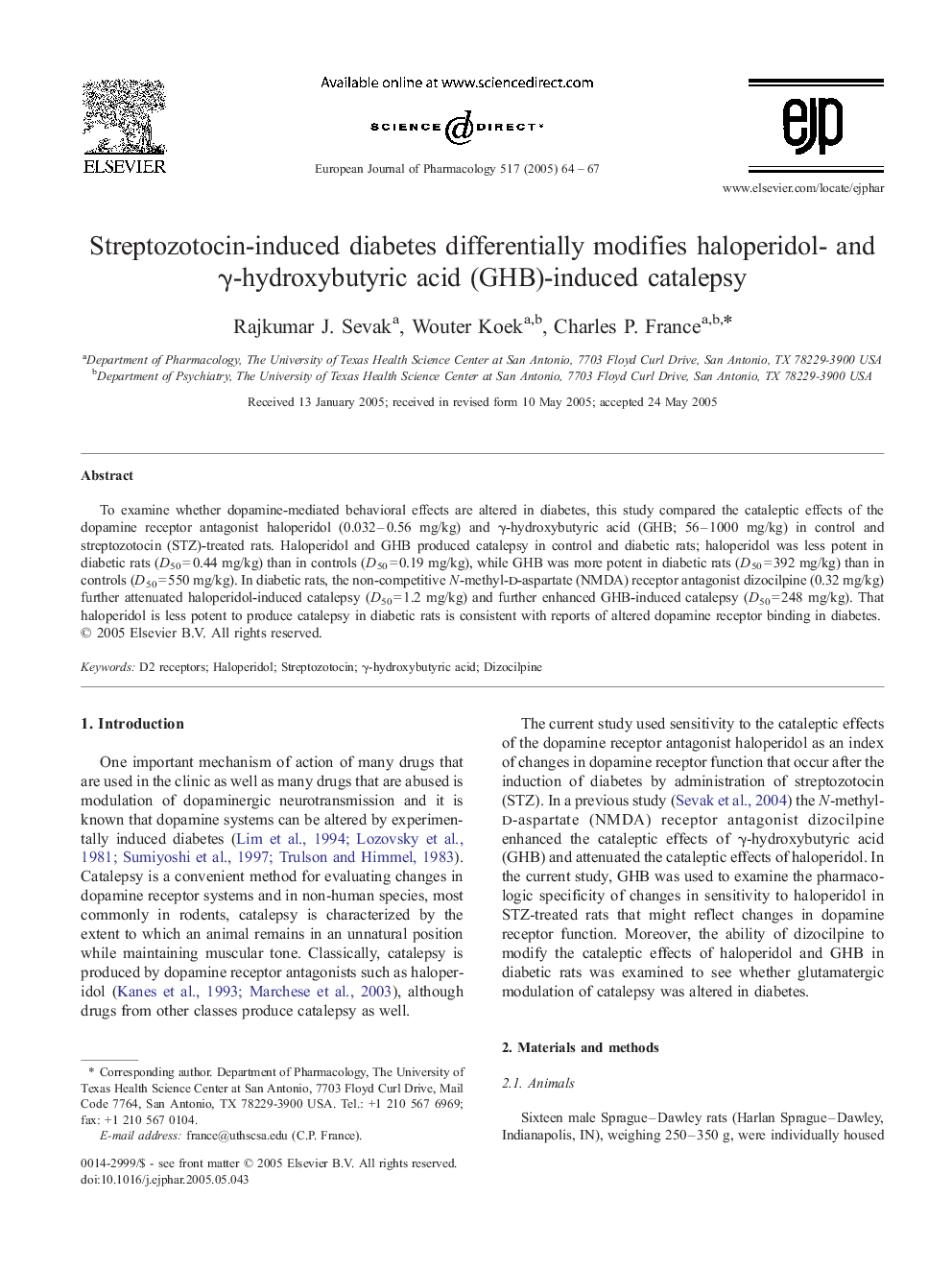| Article ID | Journal | Published Year | Pages | File Type |
|---|---|---|---|---|
| 9921240 | European Journal of Pharmacology | 2005 | 4 Pages |
Abstract
To examine whether dopamine-mediated behavioral effects are altered in diabetes, this study compared the cataleptic effects of the dopamine receptor antagonist haloperidol (0.032-0.56 mg/kg) and γ-hydroxybutyric acid (GHB; 56-1000 mg/kg) in control and streptozotocin (STZ)-treated rats. Haloperidol and GHB produced catalepsy in control and diabetic rats; haloperidol was less potent in diabetic rats (D50 = 0.44 mg/kg) than in controls (D50 = 0.19 mg/kg), while GHB was more potent in diabetic rats (D50 = 392 mg/kg) than in controls (D50 = 550 mg/kg). In diabetic rats, the non-competitive N-methyl-d-aspartate (NMDA) receptor antagonist dizocilpine (0.32 mg/kg) further attenuated haloperidol-induced catalepsy (D50 = 1.2 mg/kg) and further enhanced GHB-induced catalepsy (D50 = 248 mg/kg). That haloperidol is less potent to produce catalepsy in diabetic rats is consistent with reports of altered dopamine receptor binding in diabetes.
Related Topics
Life Sciences
Neuroscience
Cellular and Molecular Neuroscience
Authors
Rajkumar J. Sevak, Wouter Koek, Charles P. France,
